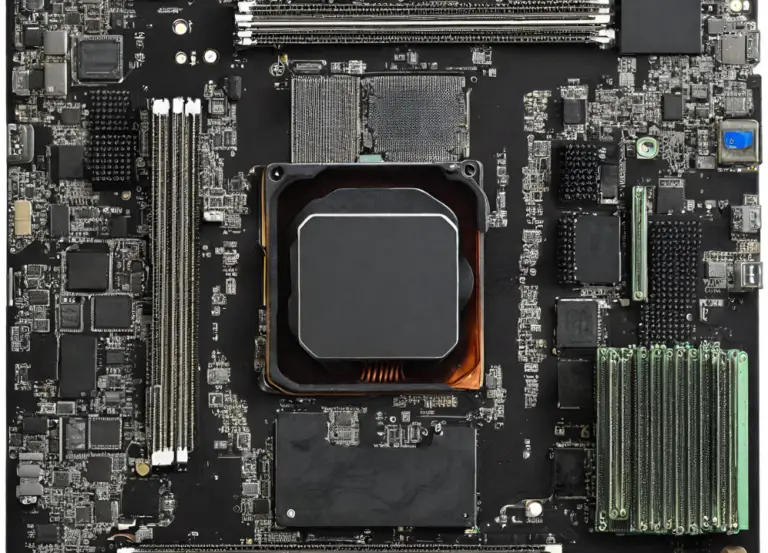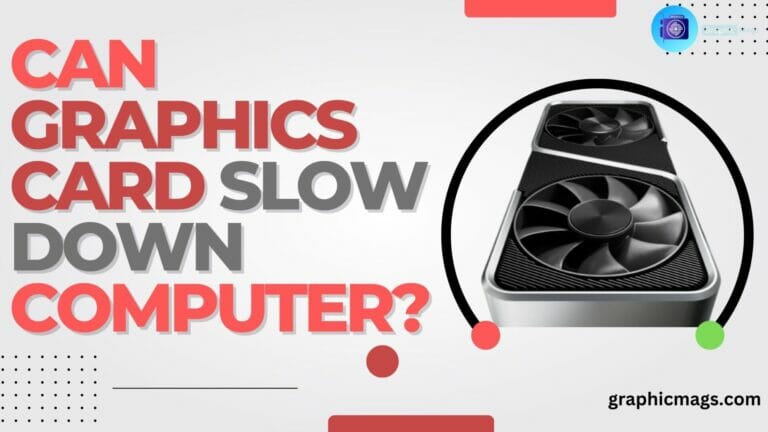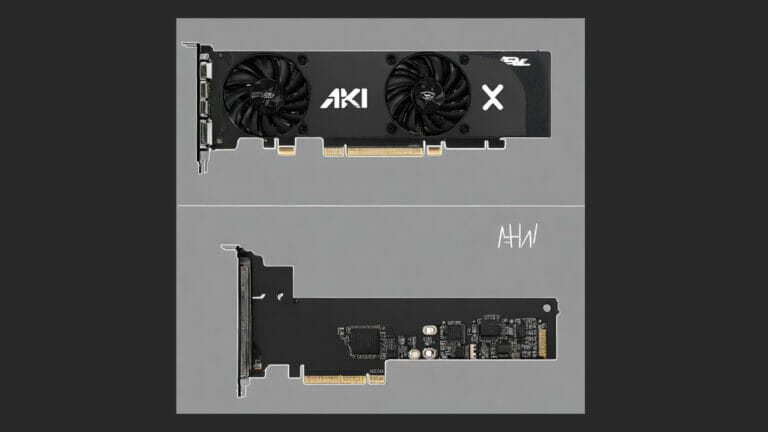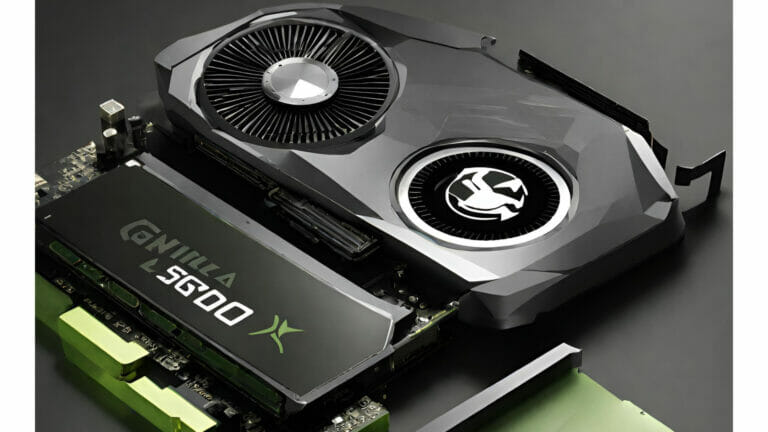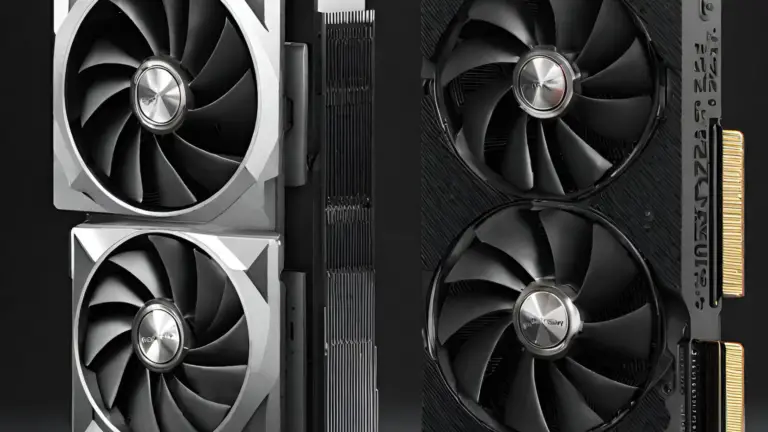Discover the Ultimate Performance: Radeon Enhanced Sync on Or off

Radeon Enhanced Sync can be turned on or off depending on individual preference for smoother gameplay. Radeon Enhanced Sync is a feature that can enhance your gaming experience by reducing screen tearing and minimizing input lag.
By synchronizing the display’s refresh rate with the GPU’s frame rate, it aims to provide a smoother and more fluid visual experience. However, some users may prefer to disable this feature if they prioritize lower input lag over screen tearing prevention.
Whether you choose to enable or disable Radeon Enhanced Sync depends on your gaming preferences and the specific requirements of the game you are playing.
What Is Radeon Enhanced Sync?
Definition And Overview Of Radeon Enhanced Sync
Radeon Enhanced Sync is an innovative display technology that enhances your gaming experience by reducing screen tearing and minimizing input lag. Tearing occurs when your graphics card sends images to your monitor faster than it can refresh, resulting in an unsightly visual anomaly where multiple frames are displayed simultaneously.
With Radeon Enhanced Sync, AMD has developed a solution that combines the benefits of V-sync with the advantages of using uncapped frame rates, providing smoother gameplay without the performance drawbacks traditionally associated with V-sync.
How It Differs From Traditional V-sync
While traditional V-sync works by synchronizing your game’s frame rate with your monitor’s refresh rate, it often comes at the cost of increased input lag and decreased performance. V-sync restricts the frame rate to match the monitor’s refresh rate, which can result in noticeable lag and stuttering, especially during fast-paced gaming moments.
Radeon Enhanced Sync, on the other hand, takes a different approach. It allows your graphics card to render frames at a higher rate than your monitor’s refresh rate but without the drawbacks of screen tearing. It achieves this by intelligently adapting the frame delivery to your monitor’s timing, minimizing input lag, and eliminating unsightly tearing artifacts.
This technology introduces a highly effective method for synchronizing your GPU’s output with your monitor’s display, resulting in significantly smoother gameplay with reduced distractions. Whether navigating treacherous landscapes or engaging in fierce battles, Radeon Enhanced Sync ensures that every frame is delivered seamlessly to your screen, providing a more immersive and enjoyable gaming experience.
Unleash The Ultimate Performance
Radeon Enhanced Sync: Unleash the Ultimate Performance
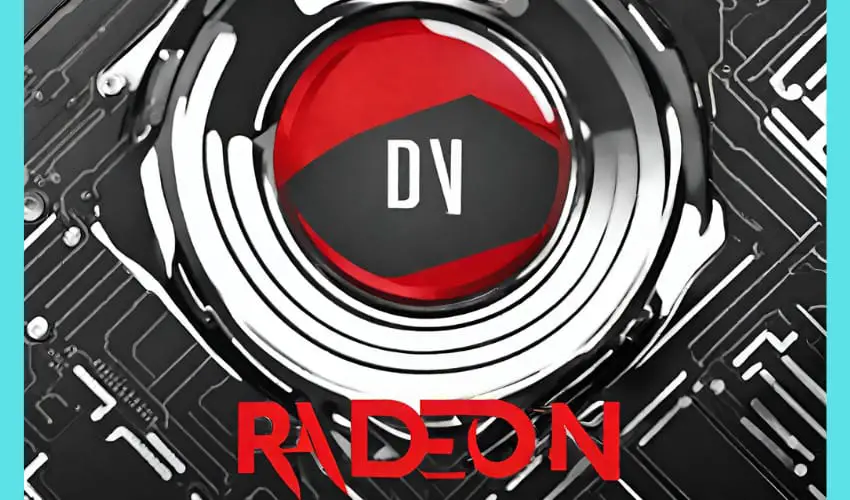
Improved Frame Rates and Smoother Gameplay
Radeon Enhanced Sync is a game-changer for PC gamers seeking the ultimate performance. By intelligently synchronizing your display’s refresh rate with Radeon GPU’s frame rates, this advanced technology ensures you experience smooth and lag-free gameplay.
Gone are the days of stuttering frame rates and screen tearing, often distracting you from fully immersing yourself in the virtual world. With Radeon Enhanced Sync, every frame is delivered with precision and fluidity, resulting in a gaming experience like never before.
Whether exploring vast open worlds, engaging in fast-paced multiplayer battles, or enjoying graphically demanding titles, Radeon Enhanced Sync works tirelessly to eliminate tearing and provide seamless visuals from start to finish.
Reduced Input Lag for a More Responsive Gaming Experience
When it comes to competitive gaming, every millisecond counts. Radeon Enhanced Sync offers more than just remarkable graphics; it also minimizes input lag to give you the edge you need to outpace your opponents.
With reduced input lag, your commands are instantly recognized and executed on-screen, providing a near-instantaneous response that can make a significant difference in intense gaming situations. You can say goodbye to frustrating delays between your actions and their impact on the game.
Designed to deliver unmatched responsiveness and precision, Radeon Enhanced Sync allows you to play confidently, knowing that your actions will be faithfully represented in real time. So whether you’re landing headshots, executing complex maneuvers, or executing perfect combos, the enhanced input responsiveness ensures your skills shine through.
Compatibility and Easy Setup
Radeon Enhanced Sync is seamlessly integrated with Radeon GPUs, making it effortlessly compatible with your gaming setup. Simply ensure you have the latest drivers installed, and you’ll unlock a world of enhanced performance.
This intuitive technology can be easily enabled or disabled through Radeon Settings, giving you full control over your gaming experience. Whether you prefer to utilize it in certain games or always have it active, the choice is yours.
In conclusion, Radeon Enhanced Sync revolutionizes the way you game, offering improved frame rates, smoother gameplay, and reduced input lag for an unparalleled gaming experience. Embrace ultimate performance and elevate your gaming with Radeon Enhanced Sync.
Tear-free Gaming Without The Drawbacks
Regarding immersive gaming experiences, nothing ruins the fun quite like screen tearing. Whether exploring vast open worlds or engaging in intense multiplayer battles, seeing screen tearing can be frustrating and significantly impact your gaming experience.
Fortunately, AMD Radeon has devised a solution to this problem – Radeon Enhanced Sync. In this article, we will delve into how Radeon Enhanced Sync eliminates screen tearing without the performance penalty of standard V-sync, ensuring a tear-free gaming experience without sacrificing responsiveness.
How Radeon Enhanced Sync Eliminates Screen Tearing Without The Performance Penalty Of Standard V-sync
Screen tearing occurs when your game’s display refresh rate and frame rate do not synchronize properly. Traditionally, enabling the V-sync option has been the go-to solution for eliminating screen tearing. However, V-sync introduces its own set of drawbacks, such as input lag and reduced performance. This is where Radeon Enhanced Sync comes to the rescue.
Radeon Enhanced Sync combines the benefits of V-sync and variable refresh rate (VRR) technologies to provide tear-free gaming without the performance penalty. This technology enables the graphics card to send frames to the display whenever they are ready, rather than waiting for the entire screen to refresh. This allows for smoother, more seamless gameplay by eliminating screen tears without the input lag and reduced performance associated with standard V-sync.
By leveraging the power of VRR technologies, Radeon Enhanced Sync keeps your gaming experience smooth and tear-free, even during intense action sequences or when your frame rate fluctuates. This means you can fully immerse yourself in the game without distracting visual artifacts.
Enhanced Visual Experience Without Sacrificing Responsiveness
In addition to eliminating screen tearing, Radeon Enhanced Sync enhances the overall visual experience without sacrificing responsiveness. With standard V-sync, the graphics card can only display frames that match the monitor’s refresh rate. This can lead to stuttering and a less fluid gaming experience, especially when the frame rate drops below the refresh rate.
Radeon Enhanced Sync tackles this issue by dynamically adjusting the frame rate based on your monitor’s refresh rate. This ensures that each frame is displayed correctly, resulting in smoother visuals and a more immersive gaming experience. Moreover, as Radeon Enhanced Sync does not introduce additional input lag or performance penalties, you can enjoy enhanced visuals and responsiveness simultaneously.
Whether exploring beautiful landscapes or engaging in fast-paced battles, Radeon Enhanced Sync allows you to see every detail without any screen tearing or compromising your gaming experience. With tear-free gaming and improved visual quality, you can take your gameplay to the next level, leaving behind the drawbacks of traditional V-sync.
Comparing Performance And Quality
Regarding gaming, performance and image quality are key factors that can make or break the experience. Radeon Enhanced Sync offers a promising solution to optimize these aspects, but how does it compare to traditional V-sync? In this section, we will analyze the impact on frame rates and input lag in gaming scenarios and examine the visual differences between Radeon Enhanced Sync and traditional V-sync.
Analyzing The Impact On Frame Rates And Input Lag In Gaming Scenarios
One primary concern when enabling any sync technology is its impact on the frame rates and input lag. This is where Radeon Enhanced Sync truly shines. Unlike traditional V-sync, which caps the frame rate to a certain value to eliminate screen tearing, Radeon Enhanced Sync focuses on reducing input lag while minimizing stuttering.
By allowing the graphics card to render frames at a higher rate than the display’s refresh rate, Radeon Enhanced Sync ensures a smoother gaming experience without sacrificing performance. This means that even if your graphics card can render frames beyond the monitor’s refresh rate, you can still enjoy reduced input lag and tear-free gameplay.
Moreover, Radeon Enhanced Sync also adapts dynamically to varying frame rates, adjusting the timing to prevent tearing and minimize input lag. This flexibility allows the technology to maintain smoothness even during demanding gaming scenarios, where frame rates may fluctuate.
Examining The Visual Differences Between Radeon Enhanced Sync And Traditional V-sync
While frame rates and input lag are critical considerations, visual quality is equally important. Traditional V-sync often introduces noticeable input lag, resulting in stuttering when the frame rate drops below the monitor’s refresh rate.
Radeon Enhanced Sync, on the other hand, offers a much-improved visual experience. Reducing input lag and stuttering ensures that your gameplay remains fluid and responsive. This can be particularly advantageous in fast-paced action games, where split-second reactions are crucial.
Additionally, Radeon Enhanced Sync provides a smoother transition between frames than traditional V-sync, resulting in a more consistent and immersive visual experience. With reduced screen tearing, you can focus on the game rather than being distracted by visual artifacts.
In conclusion, Radeon Enhanced Sync not only enhances the performance of your games by reducing input lag and stuttering but also improves the visual quality by minimizing screen tearing. Whether you are a competitive gamer seeking that extra edge or simply a casual player looking for a more enjoyable gaming session, Radeon Enhanced Sync is a feature worth considering.
Finding The Right Setting For Your Hardware
When optimizing your gaming experience, finding the right settings for your hardware is crucial. One setting that can significantly impact your gameplay is the choice between Radeon Enhanced Sync and V-sync. Both options aim to mitigate screen tearing and improve overall performance, but understanding the factors to consider and tips for optimizing performance based on your system’s capabilities is key to making the right choice.
Factors To Consider When Deciding Whether To Use Radeon Enhanced Sync Or V-sync
Choosing between Radeon Enhanced Sync and V-sync requires considering several factors that can impact your gaming experience. By understanding these factors, you can make an informed decision that best suits your hardware and preferences:
- Refresh Rate: The refresh rate of your monitor plays a vital role in determining the effectiveness of these sync options. If you have a high-refresh-rate display (such as 144Hz or higher), Radeon Enhanced Sync is often a better choice, as it allows for smoother gameplay with reduced input lag compared to traditional V-sync.
- GPU Performance: Your graphics processing unit (GPU) performance is another crucial factor to consider. If you have a high-end GPU capable of rendering frames quickly and consistently, Radeon Enhanced Sync can harness its potential, delivering a seamless gaming experience. On the other hand, if your GPU struggles to maintain high frame rates, enabling V-sync may be a better option to avoid screen tearing.
- Input Lag Tolerance: Input lag is the delay between your actions and the corresponding on-screen response. If you value responsiveness and low input lag over minor screen tearing, Radeon Enhanced Sync is the way to go. However, V-sync may be a better choice if you prioritize a tear-free display with slightly increased input lag.
Tips For Optimizing Performance Based On Your System’s Capabilities
Now that you understand the factors to consider optimizing your system’s performance is the next step toward an enhanced gaming experience. Here are some tips:
- Monitor Settings: Ensure your monitor is properly set up to match its native resolution and refresh rate. Adjusting these settings correctly can significantly improve visual quality and reduce input lag.
- GPU Settings: Use your GPU’s control panel settings to fine-tune the performance according to your hardware capabilities. Adjusting options such as anti-aliasing, texture filtering, and power settings can optimize the overall gaming experience.
- Game Settings: Each game offers a range of graphics settings. Experimenting with these settings can help you find the right balance between visual quality and performance. Consider reducing unnecessary effects and lowering the resolution to achieve smoother gameplay.
- Regular Updates: Keep your GPU drivers updated to ensure you have access to the latest performance optimizations and bug fixes. Manufacturers often release driver updates that enhance compatibility, improve stability, and provide better gaming experiences.
By considering these factors and implementing the tips above, you can find the optimal setting for your hardware, ensuring an immersive and tear-free gaming experience. So take control of your gaming performance and unlock the full potential of your hardware with the right sync option!
Step-by-Step Guide for AMD Radeon Users
If you are an AMD Radeon user, you have access to a wide range of powerful features that enhance your gaming experience. One such feature is Radeon Enhanced Sync, which allows you to synchronize your monitor’s refresh rate with your graphics card’s frame rate, resulting in smoother gameplay and reduced screen tearing. This step-by-step guide will walk you through accessing Radeon settings and toggling Enhanced Sync on or off. Follow these instructions to optimize your AMD Radeon graphics settings for the best gaming experience.
Instructions for accessing Radeon settings
To begin customizing your AMD Radeon graphics settings, access the Radeon settings panel. Here’s how you can do it:
- Right-click on your desktop background to open the context menu.
- Select “AMD Radeon Settings” from the menu to launch the Radeon settings panel.
- Once the panel is open, navigate to the “Display” tab at the top of the window.
Detailed walkthrough on toggling Radeon Enhanced Sync on or off
Now that you have accessed the Radeon settings panel let’s explore the process of enabling or disabling Enhanced Sync:
- Within the “Display” tab, scroll down until you find the “Radeon Enhanced Sync” option.
- To turn Radeon Enhanced Sync on, click the toggle switch button next to the option.
- If you wish to disable Radeon Enhanced Sync, click the toggle switch button again to turn it off.
- Make sure to click on the “Apply” button to save your changes.
And that’s it! You’ve successfully toggled Radeon Enhanced Sync on or off based on your preferences. Remember, enabling Radeon Enhanced Sync can provide a smoother gaming experience with reduced screen tearing, while disabling it may be useful for certain scenarios or compatibility purposes. Experiment with the settings and choose what works best for you.
Frequently Asked Questions Of Radeon Enhanced Sync On Or Off
What Is Radeon Enhanced Sync And How Does It Work?
Radeon Enhanced Sync is a technology that reduces screen tearing and improves graphics performance by synchronizing the frame rate of the graphics card with the monitor’s refresh rate. This eliminates stuttering and provides smoother gameplay for a better gaming experience.
Should I Have Radeon Enhanced Sync Turned On Or Off?
Whether to turn Radeon Enhanced Sync on or off depends on your specific needs. You should turn it on if you experience screen tearing and want a smoother gameplay experience. However, if you have a monitor with a high refresh rate and don’t notice screen tearing, you may prefer to turn it off to maximize performance.
Does Radeon Enhanced Sync Affect Gaming Performance?
Radeon Enhanced Sync has a minimal impact on gaming performance. In fact, it can actually improve performance by reducing screen tearing and stuttering. However, the impact may vary depending on your system configuration and the specific games you’re playing. It’s recommended to test it both ways and see which setting works best for you.
Can Radeon Enhanced Sync Be Used With Any Monitor?
Radeon Enhanced Sync can be used with most modern monitors, including both FreeSync and non-FreeSync monitors. However, FreeSync monitors are specifically designed to work with AMD graphics cards and provide the best experience. If you have a FreeSync monitor, using Radeon Enhanced Sync is recommended for optimal performance.
Conclusion
Radeon Enhanced Sync offers a seamless gaming experience by synchronizing the GPU and monitor refresh rates. This eliminates screen tearing and stuttering, delivering smooth visuals. Whether you enable or disable this feature depends on your gaming preferences and the specific game you’re playing.
Experimentation is key to finding the best setting for your system. Consider factors such as your GPU capabilities and the game’s frame rate.

